One of the more frequently asked questions regarding studio lighting is: Do you prefer continuous lighting or strobes? In fact, there is no right answer to this question, but knowing the differences between the two types of studio lighting will help you decide and choose the more appropriate type for your needs. Professional photographers use both continuous and flash lighting systems, and they are both capable of delivering beautiful images. In this article, I will begin by refresh our memory about some units and definitions of lighting: light intensity, CRI, and light temperature. Then I will continue by explaining the differences between the two light types and the pros of each one. Let us start!
Definitions:
- Light intensity and foot candle
A foot-candle is a measurement unit of light intensity and is defined as the illuminance on a one-square foot surface from a uniform source of light.
One Footcandle = one Lumen per square foot
One footcandle = 10.7 lumen/square meter
One Footcandle = 10.7 Lux
You may use an online calculator “Here”
- Color rendering index (CRI)
A color-rendering index (CRI) is a quantitative measure of the ability of a light source to reveal the colors of various objects faithfully in comparison with an ideal or natural light source. A maximum value of 100 represents the appearance of colors under daylight. To ensure accurate color rendition for photography and videography, a CRI of 85 or higher is desirable.
- Television Lighting Consistency Index (TLCI)
The process to calculate the TLCI for light is similar to that for CRI — a set of color samples is compared under a standardized light source and the light under test. However, rather than using a human observer, the TLCI uses software to calculate the color response that would result when using a video camera. The TLCI score ranges from 0 to 100. TLCI levels with a score in the range 85-100 would need no color correction.
- Color temperature (Kelvin)
The color temperature of a light source is the temperature of an ideal blackbody radiator that radiates light of a color comparable to that of the light source. Color temperature is a characteristic of visible light that has important applications in lighting, photography, and videography. Light in a range going from red to orange to yellow to white to blueish white. Color temperature is expressed in kelvins, using the symbol K, a unit of measure for absolute temperature. Color temperatures over 5000 K are called “cool colors” (bluish), while lower color temperatures (2700–3000 K) are called “warm colors” (yellowish).
Less than 2000K: gives off a dim glow of light, similar to what you might find from candlelight.
2000K-3000K: gives off a soft white glow, often yellow in appearance.
3100K-4500K: gives off a bright amount of white light.
4600K-6500K: gives off a bright amount of blue-white light, similar to that of daylight.
6500K and up: gives off a bright bluish hue of light
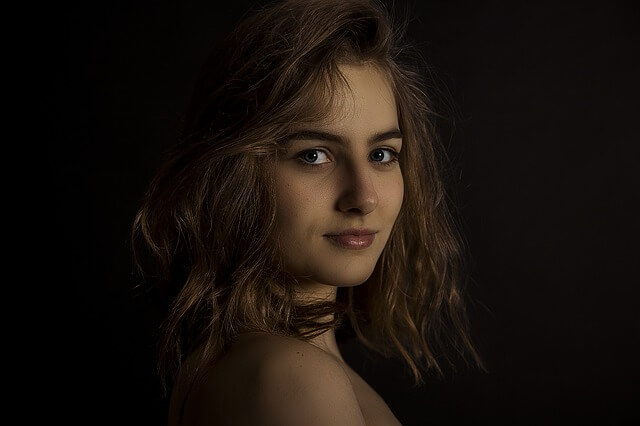
Continuous Lighting
Continuous Lighting source if turn on it will stay on. Sometimes you can increase or decrease the power of them up or down, according to your needs. The continuous light allows you to see the light effect on your subject and scene.
Pros of continuous lighting:
- Use in video shooting:
The continuous lighting is necessary when shooting videos because obviously you cannot use strobes.
- Less cost than flash
In general, Continuous Lightings are much cheaper than flashes.
- Easy to use:
One of the biggest advantages of working with constant lighting is that it’s much easier to work with. You see exactly what’s going to come out of the camera to start, and if you’re working with LED lights or daylight based lighting, then the light will burn very cool. It won’t hurt someone’s eyes the way a flash will.
- Easy to modify the light:
You can modify the amount of light for the shot. It allows you to put a softbox, a beauty dish or anything else you want on it, so we can diffuse the light.
The following are the common types of continuous lighting:
Tungsten light
Tungsten lights or hot lights are one of the least expensive lighting options for the home studio. Tungsten lights will create a beautiful, warm cast on your subject.
Fluorescent light
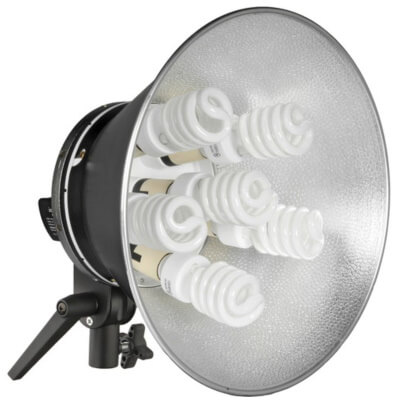
A compact fluorescent lamp (CFL), also called compact fluorescent light, energy-saving light, and compact fluorescent tube, is a fluorescent lamp designed to replace an incandescent light bulb; some types fit into light fixtures designed for incandescent bulbs.
- Color rendering
A fluorescent lamp has a color-rendering index (CRI) of about 80, where the maximum 100 represents the appearance of colors under daylight.
- Color Temperature:
The color temperature of a fluorescent lamp depends on its type; the following table shows some types of fluorescent lamps and their kelvin values.
Type Kelvins
Soft white 2700
Warm white 3000
Neutral White 3500
Cool white 4000—4100
Daylight 5000
Led light:
Continuous LED lights have a variety of uses in different types of photographic applications. LED bulbs are long-lasting, stable, and operate without an excessive amount of heat buildup. The high output of LED light intensity makes it easy to adjust our camera settings for whatever depth of focus is wanted. This makes them great for portrait photography and product photography with a limited budget.
There are different types of LED lighting kits, the most common are:
Panel lights: This is perhaps the most common type of LED light for photography. As the name implies, these are made up of a bank of LED mounted on a panel which can be either camera mounted or adapted to a light stand or tripod.
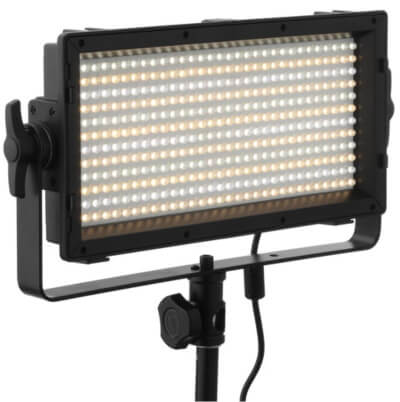
My favorite type is the Pack LED Video Light Kit
Ring lights: Many ring lights are fluorescent tube bulbs, but there are some excellent choices available in LED ring lights. Useful for shadowless closeup photography.
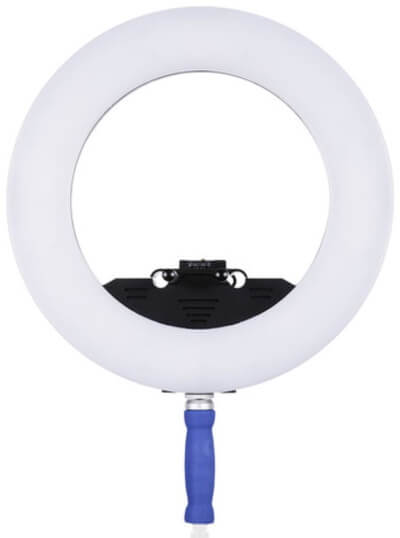
My favorite product of the ring light is the Sensyne 10” Ring Light
- Color rendering:
LED bulbs have grown in popularity recently, mainly due to their energy-efficient qualities and bright light production. In terms of CRI for LED, most LED lights produce a score of about 80 to 90 on the chart. The result is a brighter room but with a much more natural, accurate output of light. Ultra-high CRI bulbs (CRI of 95) produce pleasant light and make everything look better.
- Color temperature:
Below are some of the commonly used color names:
2700K – Soft White, Warm White
3000K – Bright White, Soft White
4000K – Pure White, Cool White
5000K – Daylight, Cool White, Crystal White
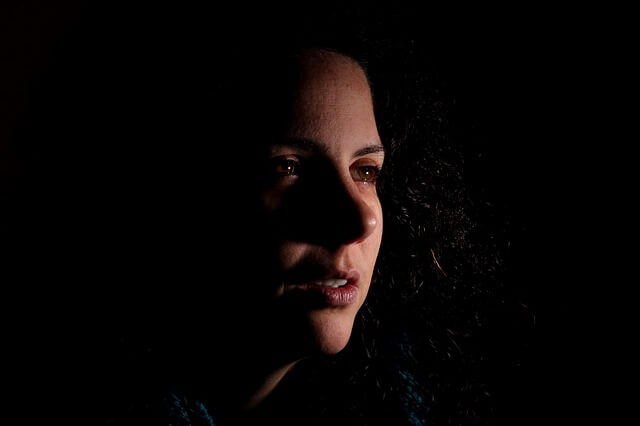
Strobe/Flash lighting:
Strobe lighting is just like flash: it lights up when you trigger it and needs a bit of time to recycle so that it can be fully powered for the next shot. You cannot see exactly how your scene will be captured until you trigger the flash. Once you do, a high-intensity light will pulse for just a fraction of a section, lighting the scene as you hopefully expected when you positioned it.
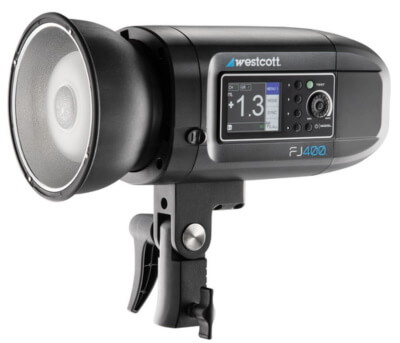
My favorite products of the strobe are:
Pros of Strobe/Flash lighting:
- Strobe gives more power:
Strobes just give you more power in comparison to continuous lights. Therefore, you do not have to worry about your ISO setting; you can easily go for a lower ISO. This makes for less grainy photos and just a nicer image.
- Can freeze a moving subject:
Because strobes are high-speed, you can capture and freeze fast-moving subjects.
- Strobe/flash are relatively smaller and lighter
- Strobe/flash can control the distance the light spreads as well as how wide the spread is.
Many Strobe/Flash also have TTL or Through the Lens, which is essentially an auto mode for the flash. Other settings include adjusting the zoom.
- Easy battery solutions
Strobe lights run on lithium batteries now, which is much more affordable. Unlike LED lights, you pay for the battery and the light separately, which ends up costing you a lot.
Verdict
If you are going to do videos and still photography, I would recommend using constant light, which gives you plenty of flexibility for both. Otherwise, if you are only doing still photography, I think you may consider learning how to use strobe lights; there are so many opportunities there.
Related posts:
Photography Studio – Setting Up Home Photography Studio
Photography Lighting Techniques – Softbox Vs Umbrella
Photography Lighting Techniques – Portrait Lighting Setup
What Is Beauty Dish – My Favorite Portrait Lighting
Thanks for reading, I hope you enjoyed the article if you have any questions just post them below & I will be happy to answer you.
If you enjoy the site, don’t forget to subscribe, we will only inform you when a new article is posted.






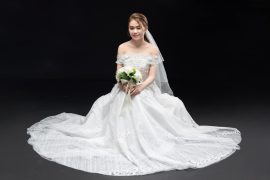

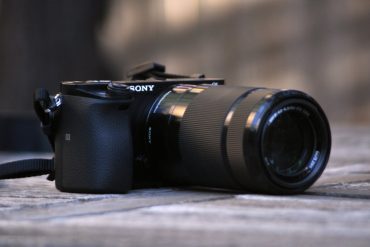
As a photographer, the use of lighting in taking pictures and also in making videos can be overrated. There are times where you get a really bad shot bcsue the light around is not good enough for clear sight. I make use of continuous light when taking pictures in my studio more than I am me you of flash lighting. Although in some outdoor shootings i make use of flash and its really good. Cheers
Hi Bella
Thanks for your comment, I agree with you, If you are going to do videos and stills photography, I would recommend using constant light, which gives you plenty of flexibility for both. Otherwise, if you are only doing still photography, I think you may consider learning how to use strobe lights
Hello Amin, a very nice and clear information about continuous lighting and flash lightning. Its nice when there is a clear distinction about these lights and they can be fully used for its real purposes. Both flash lights and continuous lights are being used for photography in some cases and i have seen such mostly during a long photo shoot in the studio. You have a well detailed post and i would love to get some of these flash lights.
Thanks for your comment, I hope you will try the flashlight, they are amazing. You may check my post How To Use Flash In Photography- The Full Guide I think it contains a lot of useful information.